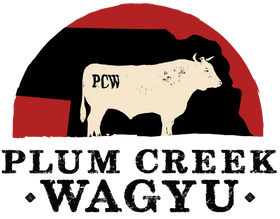Wagyu beef is synonymous with luxury and quality, renowned for its rich flavor and exceptional tenderness. But have you ever wondered about the journey that Wagyu takes from the ranch to your plate? This blog post will walk you through the meticulous process involved in producing this premium meat, highlighting the dedication and craftsmanship that goes into every step.
1. Raising Wagyu Cattle: The Foundation of Quality
The journey begins on the ranch, where Wagyu cattle are raised under strict standards to ensure their health and well-being.
- Breeding and Genetics: Wagyu cattle are bred from genetically superior lines, emphasizing traits such as marbling and tenderness. This careful selection process is crucial for producing high-quality beef.
- Environment and Care: Wagyu cattle are typically raised in stress-free environments, with ample space to roam and graze. This humane treatment contributes to the overall quality of the meat, as relaxed animals yield better flavor.
2. Feeding Practices: Enhancing Flavor and Marbling
What Wagyu cattle eat plays a significant role in the quality of the beef.
- Specialized Diet: Farmers often provide a carefully balanced diet that includes high-quality grains, forages, and vitamins. This diet is designed to promote optimal marbling and flavor development.
- Grain Finishing: Many Wagyu cattle undergo a grain-finishing process, which enhances the intramuscular fat content and contributes to the beef’s signature buttery texture.
3. Harvesting: Ensuring Quality at Every Step
When the cattle reach maturity, they are ready for harvesting. This process is conducted with care to ensure the highest standards of quality and humane treatment.
- Humane Slaughtering: The harvesting process is designed to minimize stress for the animals, following ethical practices that align with industry standards. This humane approach is crucial for maintaining the integrity of the beef.
- Processing: Once harvested, the cattle are processed in facilities that adhere to strict health and safety regulations. The meat is inspected for quality and prepared for distribution.
4. Aging: Developing Rich Flavor and Tenderness
After processing, the Wagyu beef undergoes aging, a key step that enhances its flavor and tenderness.
- Dry Aging: Some cuts of Wagyu are dry-aged, allowing the meat to develop a concentrated flavor and tender texture. This process can take weeks, during which moisture evaporates, intensifying the beef's rich taste.
- Wet Aging: Other cuts may be wet-aged in vacuum-sealed packaging, which helps retain moisture while also allowing the flavors to develop.
5. Distribution: Bringing Wagyu to Consumers
Once the aging process is complete, the Wagyu beef is ready for distribution.
- Packaging: The beef is carefully packaged to preserve its quality during transportation. Vacuum sealing is common to prevent exposure to air and maintain freshness.
- Local and Global Markets: Wagyu beef is distributed to local markets, restaurants, and specialty retailers, ensuring that consumers can access this luxury product. Whether enjoyed at a high-end steakhouse or cooked at home, Wagyu beef is celebrated for its unique qualities.
6. Cooking and Enjoying: The Final Step
Finally, the Wagyu beef arrives on your plate, ready to be enjoyed.
- Preparation Techniques: Whether grilled, pan-seared, or roasted, the way you cook Wagyu can greatly impact its flavor and texture. Simple seasoning with salt and pepper often suffices to let the meat’s natural qualities shine.
- Pairing and Serving: Wagyu pairs beautifully with a variety of sides and beverages, enhancing the dining experience. Consider complementing it with simple vegetables, fine wines, or gourmet sauces.
Conclusion
The journey of Wagyu beef from farm to table is a testament to the dedication and craftsmanship of ranchers, farmers, and chefs. From the careful breeding and humane treatment of the cattle to the precise aging and cooking techniques, every step is designed to ensure that this luxurious meat delivers an exceptional dining experience. The next time you savor a Wagyu steak, you can appreciate the intricate process that brings this remarkable beef to your plate.
Related Posts
Sustainability in Wagyu Ranching: How Plum Creek Wagyu is Committed to the Environment
Explore how Plum Creek Wagyu is committed to sustainability with practices like rotational grazing, water conservation, humane treatment of cattle, and more. Learn about our efforts to produce high-quality beef while protecting the environment.
Wagyu Beef vs. Angus Beef: A Flavor Showdown
Discover the differences between Wagyu beef and Angus beef in this comprehensive showdown. Learn about flavor, texture, and the overall eating experience to determine which premium beef is right for you.
Wagyu Beef Recipes for Every Season: From Summer Grilling to Winter Braising
Explore seasonal Wagyu beef recipes perfect for any time of the year. From summer grilling to cozy winter braises, discover easy and delicious ways to incorporate premium Wagyu into your meals.
Health Benefits of Wagyu Beef: Why It's a Premium Choice
Discover the health benefits of Wagyu beef, from its heart-healthy monounsaturated fats to its higher levels of omega-3 fatty acids and CLA. Learn why Wagyu beef is a premium choice for those seeking a flavorful yet healthier alternative to traditional meats.
Pairing Wagyu Beef with Wines: A Guide to the Perfect Match
Discover expert tips on pairing Wagyu beef with the perfect wines. From Ribeye to Filet Mignon, explore the best wine matches to elevate your dining experience and make every bite of Wagyu beef unforgettable.
The History and Origins of Wagyu Beef: From Japan to Nebraska
Explore the rich history of Wagyu beef, tracing its origins from ancient Japan to the modern-day farms of Nebraska. Learn about the unique breeding practices and cultural significance of Wagyu, and discover how Plum Creek Wagyu brings this exceptional beef to your table.








